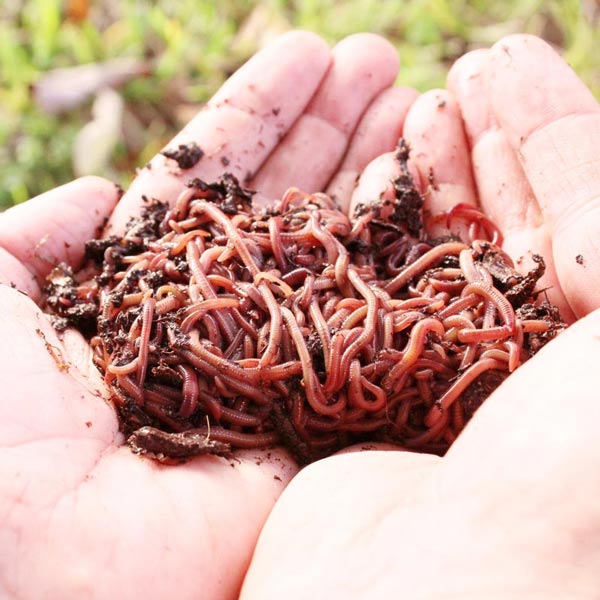Red worms: Turn scraps into fertilizer
Red worms: Turn scraps into fertilizer
Blog Article
Whatever You Need to Find Out About Red Wigglers for Composting
Red wigglers, or Eisenia fetida, play a pivotal function in the world of composting, changing organic waste into beneficial dirt amendments. Their unique biological characteristics enable them to flourish in different conditions, making them a suitable selection for both amateur and knowledgeable composters alike. Understanding their requirements and benefits is essential for establishing a productive vermicomposting system. However, the process of establishing a worm container and preserving it can present difficulties. To successfully harness the capacity of these worms, one should explore the intricacies of their treatment and administration.
What Are Red Wigglers?

(Charlotte Worm Farms)
Belonging To The United States and copyright, red wigglers are surface-dwelling microorganisms that like wet, cozy habitats rich in breaking down natural issue. Their diet plan consists mainly of decaying plant material, food scraps, and various other organic particles, which they eat and damage down efficiently. As they digest this material, they produce nutrient-rich castings that boost soil fertility.
Red wigglers are hermaphroditic, possessing both male and female reproductive body organs, and can replicate rapidly under optimum conditions. On the whole, red wigglers are vital factors to the procedure of recycling natural waste into beneficial compost.
Benefits of Utilizing Red Wigglers
Making use of red wigglers in composting systems offers many advantages that boost both the efficiency of waste administration and the top quality of the resulting compost. These worms, medically known as Eisenia fetida, are especially reliable at breaking down raw material, transforming kitchen area scraps and backyard waste right into nutrient-rich compost at an accelerated rate.
Among the key benefits of making use of red wigglers is their ability to take in large quantities of natural material, usually processing their weight in food waste daily. This high usage rate results in quicker disintegration and reduces the volume of waste sent to landfills. The castings produced by red wigglers are abundant in important nutrients, advantageous microbes, and enzymes, making them a superb fertilizer for yards and plants.
In addition, red wigglers thrive in a range of settings, making them versatile for both interior and exterior composting systems - red wigglers. Their existence in a garden compost container assists to aerate the product, avoiding smells and advertising a healthy composting procedure. Generally, utilizing red wigglers not just adds to effective waste monitoring but additionally supports sustainable horticulture techniques with the manufacturing of top quality garden compost
(eisenia fetida for sale)
Establishing Up Your Worm Container
To efficiently establish a worm bin, it is important to pick a suitable container that fulfills the requirements of red wigglers while providing a conducive environment for composting. An appropriate container can be made from plastic, timber, or steel, with a capacity of at the very least 1 square foot for each pound of worms.
Make sure the container has sufficient drainage openings to protect against excess moisture, as red wigglers thrive in a moist, however not water logged, setting. red wigglers. The bin needs to likewise be ventilated to provide adequate air flow, protecting against anaerobic problems that can hurt the worms
An ideal place for the worm container is an awesome, dark area, without straight sunlight and extreme temperatures, as red wigglers prefer a temperature level variety of 55 to 77 levels Fahrenheit.
Before presenting the worms, prepare bed linens products such as shredded paper, cardboard, or coconut coir, which will certainly offer both habitat and food. Dampen the bedding lightly to develop a welcoming atmosphere for the worms. Consider placing a lid on the container to preserve moisture and minimize parasites, while ensuring it can be conveniently gotten rid of for upkeep.
Feeding and Care Standards
Feeding red wigglers is a vital aspect of keeping a healthy composting system. These worms prosper on a diverse diet, largely made up of natural materials such as vegetables and fruit scraps, coffee premises, and crushed eggshells. It is vital to prevent feeding them meat, milk, and oily foods, as these can develop undesirable smells and attract insects.
When introducing food to your worm container, slice or shred materials into smaller pieces to help with quicker decay. Beginning with percentages to assess the worms' usage rate, gradually boosting the quantity as they adapt. It is a good idea to alternative feeding areas within the bin to motivate comprehensive mixing and aeration of the garden compost.

Troubleshooting Common Issues
Maintaining a growing worm composting system can often provide obstacles that go to my site require interest and troubleshooting. Usual concerns include an unpleasant smell, which often indicates overfeeding or the presence of anaerobic conditions. To fix this, lower the quantity of food included and make sure appropriate aeration by blending the bed linen material.
An additional regular trouble is the retreat of worms from the bin. This can take place due to extreme dampness or unsuitable environmental conditions. Consistently check the moisture levels, going for a moist yet not soaked uniformity, and keep optimum temperature levels between 60-80 ° F(15-27 ° C )to produce a comfortable environment for your red wigglers.
Parasites, such as fruit flies, can likewise attack worm containers. red wigglers. To battle this, cover food scraps with a layer of bedding or shredded paper to prevent flies from laying eggs. Additionally, make sure that any type of food included is fresh and without mold and mildew, which can attract undesirable bugs
Last but not least, if your worms seem inactive, look for anxiety factors such as temperature variations or poor moisture. Addressing these typical concerns will certainly aid maintain a healthy and efficient worm composting system.
Verdict
In recap, red wigglers, or Eisenia fetida, play a crucial duty in lasting waste administration with vermicomposting. Proper setup and upkeep of a worm container, along with adherence to feeding standards, guarantee a growing ecological community that minimizes landfill contributions.
Report this page